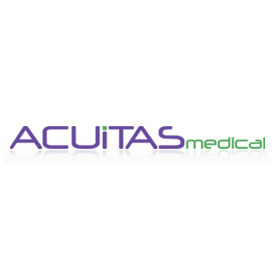by
Barbara Kram, Editor | August 12, 2010
Radiologists are already accustomed to forgoing film in favor of digital imaging. The next big thing may be a shift away from image interpretation altogether into a brave new world in which doctors learn to analyze data maps.
Modalities including MR produce images from underlying data sets. A few companies like Acuitas Medical have developed data acquisition software to dig out this clinical gold mine and analyze it in different ways to spot disease and track treatments. The company's technique, called fine texture analysis, is used to create informative views of tissue and bone.
"An MRI has a range of pulse sequences to generate different kinds of images. Basically each sequence produces a different kind of data, which in the standard application produces an image. We have a different pulse sequence--a unique one that we use to acquire our own data, which we then analyze separately," explained John P. Heinrich, Ph.D., Chairman and CEO of Acuitas Medical Ltd., Swansea, Wales.



Ad Statistics
Times Displayed: 46909
Times Visited: 1427 MIT labs, experts in Multi-Vendor component level repair of: MRI Coils, RF amplifiers, Gradient Amplifiers Contrast Media Injectors. System repairs, sub-assembly repairs, component level repairs, refurbish/calibrate. info@mitlabsusa.com/+1 (305) 470-8013
An example of the company's proprietary analytical techniques is analyzing MR data on trabecular bone makeup. The porous structures are comprised of a network of bone with marrow pockets in between.
"Our data looks like a spectrum and indicates the size and the spacing of the elements in the [porous] bone. A picture of osteoporotic bone shows that the elements typically have gotten much thinner. Space between bone structures has gotten larger and some are disconnected altogether," Heinrich said.
The company's software may spot the degenerative process earlier than conventional imaging methods. The logical extension of this capability is that in the future, MR might diagnose thinning bones in osteoporosis. Given today's concerns over radiation exposure from X-rays and CT scans, a broadening of applications for magnetic resonance imaging holds promise.
Acuitas plans to apply its software, which works with any make and model MR scanner, to diseases such as fibrosis of the liver and other organs, and interstitial lung disease. In addition to clinical applications, the research potential is great to use sensitive data analysis to track the efficacy of drugs as early as possible in trials or treatment.
"There is a whole set of new anti-fibrosis drugs under development. So we think that's an area where we can show clinical utility and demonstrate not only the ability to observe fibrosis before you can see it with conventional imaging but also to be able to track the course of therapy," Heinrich said. "The same story in interstitial lung disease where the gold standard is CT. The drawback there is that because the thorax and the lungs are so dense, in order to get good image quality you typically need relatively high doses [of radiation]. We think this is an area where we can not only demonstrate clinical utility but demonstrate an alternative that will completely eliminate the need for ionizing radiation, which we think will be a very significant advance.

